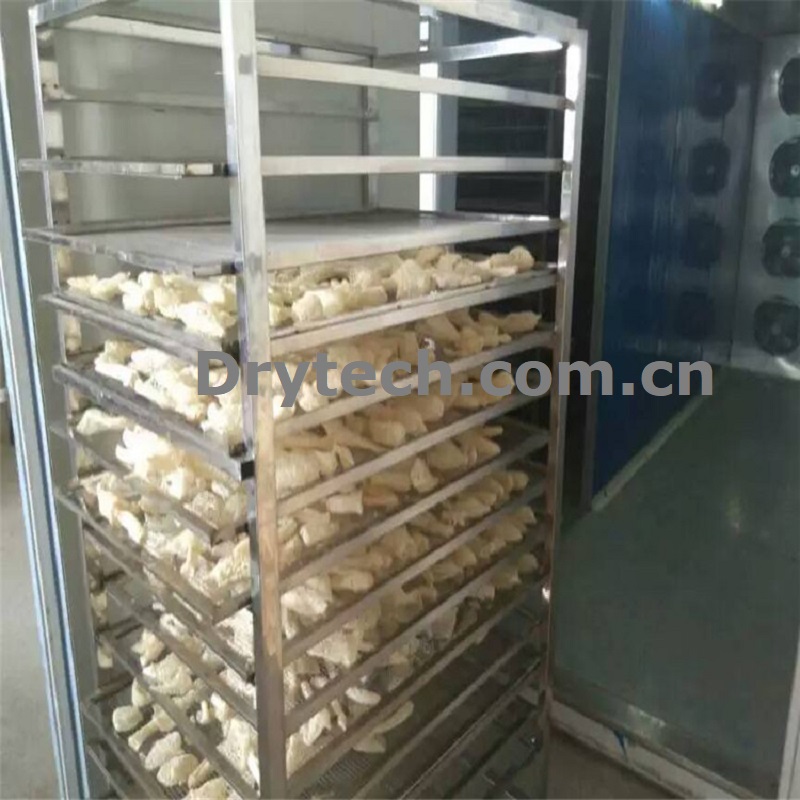Bamboo fungus |
Bamboo fungus is saprophytic, and grows in the bamboo forests. It absorbs nutrients from dead bamboo roots, culms and leaves. Wild bamboo fungus grows in bamboo forests such as the Mao bamboo (phyllostachys edulis), Ping bamboo (qiongzhuea communis Hsueh), Bitter bamboo (Pleioblastus amarus keng) and bambusa emeinsis. It can grow in black, purple and yellow soil. Bamboo fungus is a saprophytic fungus, and its hypha can penetrate through the antagonistic line of many microorganisms. It also can make use of cellulose and lignin many microorganisms can’t. Bamboo and wood sawdust, mixed with a small amount of inorganic salt, can meet its nutritional demand. Many people in Guangxi, Fujian, Sichuan and Hunan do business related to processing bamboo fungus. More and more people have adopted bamboo fungus dryers to cure it since such dryers were introduced.
|
How to dry bamboo fungus with DRYTECH dryer |
Outdoor bamboo fungus breaks its button and completely spreads its lacy “skirt” before dawn. Pick up bamboo fungus as soon as it opens. If applicable, pick up its fruiting bodies with their skirt spreading half or its mature button; put it indoors; and wait its skirt to completely open. Use a knife to cut the rhizomorph at the bottom of the volva; carefully take the cap and the volva off with its stipe and skirt left, use wet gauze to wipe it clean or clear water to wash it; and then put it in the basket or bamboo sieve where a piece of white paper is placed. Don’t tear or break the bamboo fungus. Grade it by group, and dry it at lower temperature. Dry it at 40 °C, and turn it over every half an hour. After that, raise the temperature to 50°C slowly, and turn it over every 5 hours. After 4 hours, reduce the temperature to 40°C, and dry it for another 3 hours. Take it out, cool it for 20-30 minutes once the drying process is over. Grade it by group for packing after it turns soft. Dried bamboo fungus weighs 26-28% of fresh bamboo fungus.
|



